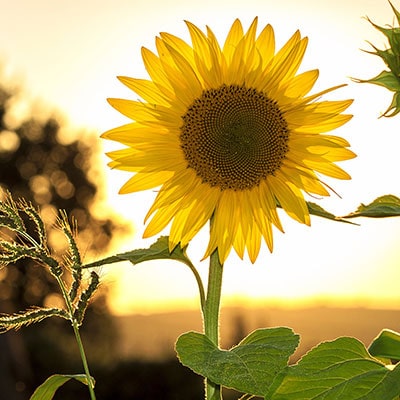
The weather is now warming up and soil conditions are such that new plant shoots are appearing everywhere with a surge of new growth kick-starting the summer garden. Now is the time to set out young plants that you have bought from the garden centre or have grown on your own. It is also a great time to get the lawn sorted and fed, planting some colourful annuals, and to bring a bit of wildlife into the garden. Below is a guide to creating and maintaining the summer garden to make it the best it can be.
Growing your lawn
Now is the time to grass over an unwanted bed or to grow a new lawn from seed. Over the next few weeks sow grass seed at your earliest convenience. Do it when the soil is not boggy, but moist. The soil must first be prepared by digging it over and working in a bit of organic matter. The organic matter can be a dressing of proper pre-seeding lawn fertiliser or general feed like blood, fish and bone meal. Simply sprinkle it over the soil and rake it in well to prepare for the sowing of seed. Then firm the soil down evenly by treading it over while wearing boots. To compact any loose areas make sure to sink your weight down into the heels. Repeat these steps working in different directions until the area is level and has a smooth surface. The soil should be like the texture of breadcrumbs.
Figure out the amount of grass seed that is needed by using one to two ounces per square yard. Divide the total amount of grass seed needed in half. Then spread one half up and down the area. Then go from side to side and spread the other half. This will help to ensure the grass seed is spread evenly. Follow the spreading with a bit of light raking to work the seed into the soil. This sowing process should take place shortly before rain is due to fall. However, if the rain does not fall be sure to give the area a good soaking with a sprinkler or the garden hose. Do not cut the grass until it is at least an inch and a half long and then only clip the tops by hand or with a light hover mower with the blades set at their highest setting. Sowing the lawn now can create a lush lawn for the summer.
Planting colourful annuals
Annuals are exciting plants to grow, whether from seed or purchasing from the garden centre and further growing the young plants. Annuals are often the focus of summer gardens because of the beautiful and colourful flowers. They are quite exciting to grow because they do so rather quickly. Consider that annuals, unlike perennial plants, have to germinate, grow to maturity, flower, and set seed all before dying and all in a single growing season. The following is a list of annuals that are not typical varieties, but are relatively easy to grow and quite beautiful.
The velvet trumpet flower, or Salpiglossis sinuata, is an old-fashioned plant that is not often seen. The deep, dark veining of the velvety flowers adds an exotic touch to any garden. This is an upright plant that does not take much space. It likes soil that does not dry out and a warm, sheltered position. Regular deadheading of this plant encourages more flowering. Two varieties include "Kew Blue", which is a deep blue-violet and grows to 70cm and "Little Friends", which is mixed coloured and grows to 60cm tall.
For flowers with an air of Victoriana the Schizanthus, also known as the poor man's orchid, this pretty plant is perfect. These are ideally suited to a cottage garden, maybe dotted through a border with candytuft, nigella, and antirrhinum. Grow a few of these plants in a large pot to really appreciate their beauty close up. These plants benefit from a bit of shelter from the wind, but are quite tough otherwise. A reliable seed strain known as Angel Wings has mixed colours on shorter, bushy plants of 30cm to 40cm tall.
Tithonia rotundifolia, also called the Mexican sunflower, is a strongly upright plant with marigold-like flowers of bright orange colour. This is an ideal late season colour plant when other plants are beginning to fade. For a jazzy black/orange contrast try planting this flower among the dark purple leaves of Sambucus 'Black Beauty', an ornamental elderberry plant. A warm site and good soil will give the tallest plants.
Attracting a bit of wildlife
Butterflies can be attracted to a garden by offering flowers they enjoy feeding upon. There are fifty-nine resident butterfly species in the UK as well as another thirty migrant species that visit from overseas. Butterflies can be encouraged into a garden by reducing the use of pesticides and planting more native plants as well as single flowers, which are easier for butterflies to feed from. Further encourage butterflies in the garden by creating a meadow like unkempt corner of the garden. Most butterfly larvae will feed on the wild plants, nettles, and thistles, giving you home grown butterflies as well as a pretty garden and meadow area.
